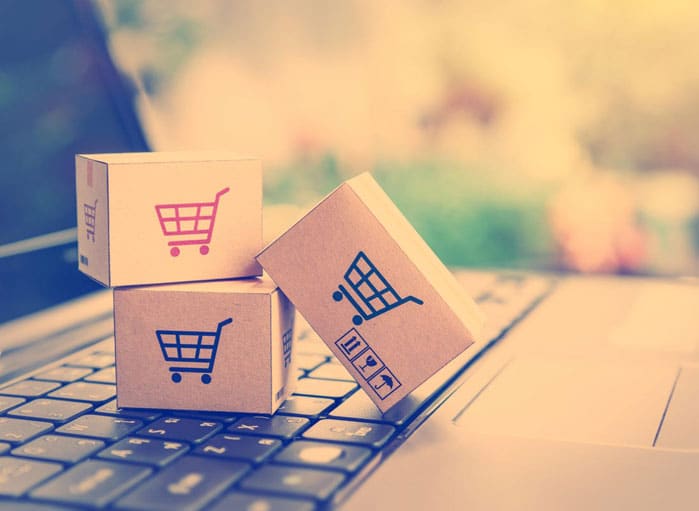
The Evolution into Digital Commerce
Tags: Digital Commerce,eCommerce
eWay Corp November 1, 2018 2 MIN READ

Digital commerce, although massively impactful is not the first major revolution to occur in the B2C or B2B world. It has been evolving from the first time a store has offered an added service to increase the customer experience and drive loyalty. But before we get into where it came from, let’s make sure we know exactly what it is.
Directly, Digital commerce (D-commerce) is a type of ecommerce used by a digital organization that sells products online; but that is a simple surface area definition. D-commerce involves the entire marketing strategy around building an online customer experience that not only delivers transactions for a good, but creates an online relationship with the customer. One of the simplest versions of this is a subscription based program online such as movie streaming services or regular grocery deliveries from an online retailer. To bring a little more complexity to it, D-commerce is not built on a single channel but on mobile, desktop, social media engagement, and customer support as well as personalizing experiences to fit the All businesses are loving it, and there’s statistics to prove it worthwhile. 88 percent of B2B decision makers anticipate offering products in the next five years that will be primarily sold online most likely because. 89 percent of B2B decision makers attribute expected business growth to the success of digital commerce.
Customers are a continuously evolving in every way. New trends on purchases pop up, new products become the hot item and old ones become obsolete. As we are approaching the holiday season and Black Friday being all but just around the corner, gift shopping is a prime example. New movies, games, clothing trends, toys, cooking utensils, and the like are coming out in hopes to fly off the shelves even faster than they were stocked. But underneath it all is something the customer never thinks about near as much as the product going into their shopping cart. The evolving necessities and conveniences involved in the shopping experience has grown with consumers who only acknowledge it when some convenience they deemed the new standard is not granted to them.
Before large scale brick and mortar department stores were built there was the boom of mail order catalogues giving you the convenience of ordering anything and everything from the comfort of your home. This included items that the small local stores had no way carrying in stores such as laundry machines. Shortly following, a company called Sears took the wholesale to consumers even more directly by opening its first brick and mortar store in the 1920s. Now a convenient delivery was less than a day away and you could view the line of shiny new appliances in person. But coming into the closing hours of 2018 Sears has recently declared bankruptcy, so what happened?
Netflix happened. Or more the speed of internet streaming set a new pace. Blockbuster video rental stores used to be a thing of glory for kids and adults alike looking for the next great movie, but if only you didn’t have to get up and go to the store for those rentals. Maybe just go straight to your mailbox to pick up and return your online rental? The idea didn’t take immediately, but before long, Netflix ditched the mail and started building into their streaming service which is at this time worth $306.48 per share and the tenth largest internet company by revenue in the world.
Looking at this once again, we can see that a continuous evolution into a streamlined customer experience that provides speed, efficiency and new products is what will create, and build loyalty in the world; so where are we to go in the digital world?
We circle back to the massive capital world of retailers and introduce you to another young, growing household name that got its start selling books online in 1995, Amazon. At the time it was just another online shop doing nothing to stand out in the crowd of young domains trying to capitalize on eCommerce on a hunch that online sales could be huge. Google.com did not even exist yet and there were fewer than 100,000 websites (over 1 billion now) in this new landscape. The small company slowly built its marketplace into other products with CDs and DVDs and eventually developed the aptly named “Amazon Marketplace” solidifying itself as the one stop online shop. As brick and mortar stores such as Walmart, Target, and large tech stores worked to replicate, Amazon needed to continuing growing its ecommerce only store to continue driving customer loyalty. This evolved into digital commerce.
How advanced has this gotten? Take a look at the online services you interact with daily. Monthly box delivery services from nerd hobbies to toys and treats for your dogs have been exploding and they were born entirely out of D-commerce. Netflix has developed a refined program to show you what other people with similar viewing tendencies like you are watching and providing you a full list of new shows to check out (or at least scroll through until you give up and go to bed). Amazon has driven customer loyalty through a full market place of not only products you can buy, but an entire streaming service that you get with their membership that includes free two day shipping. Furthermore, their Amazon Web Services brings a new tier of B2B services that will help build your own D-commerce business through managed hosting of websites and more.
The building of digital commerce hasn’t slowed down either. In the online world, retail ecommerce is predicted to hit $4.5 trillion by 2021. To think that at one point the mail order catalogue was the gold standard of commerce; now these are something you’re likely to see in the backs of airplane seats. So what can we expect in the future of digital commerce? With the increased rate of change we are experiencing in this technological age, the next big change is much more likely to be right around the corner rather than 125 years in the making. eWay Corp will be focused on finding these trends and helping our partners capitalize on them.



